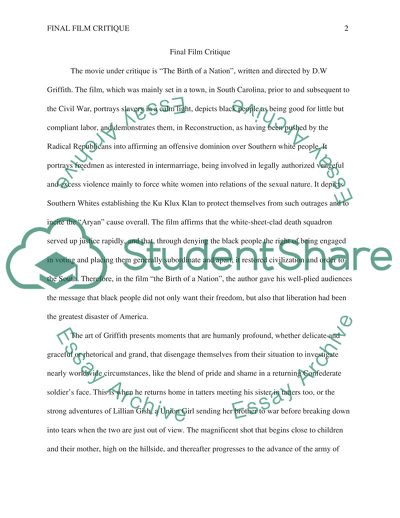Cite this document
(Critique of The Birth of a Nation Film Directed by D.W Griffith Movie Review, n.d.)
Critique of The Birth of a Nation Film Directed by D.W Griffith Movie Review. https://studentshare.org/history/1813138-writing-the-final-film-critique
Critique of The Birth of a Nation Film Directed by D.W Griffith Movie Review. https://studentshare.org/history/1813138-writing-the-final-film-critique
(Critique of The Birth of a Nation Film Directed by D.W Griffith Movie Review)
Critique of The Birth of a Nation Film Directed by D.W Griffith Movie Review. https://studentshare.org/history/1813138-writing-the-final-film-critique.
Critique of The Birth of a Nation Film Directed by D.W Griffith Movie Review. https://studentshare.org/history/1813138-writing-the-final-film-critique.
“Critique of The Birth of a Nation Film Directed by D.W Griffith Movie Review”. https://studentshare.org/history/1813138-writing-the-final-film-critique.


